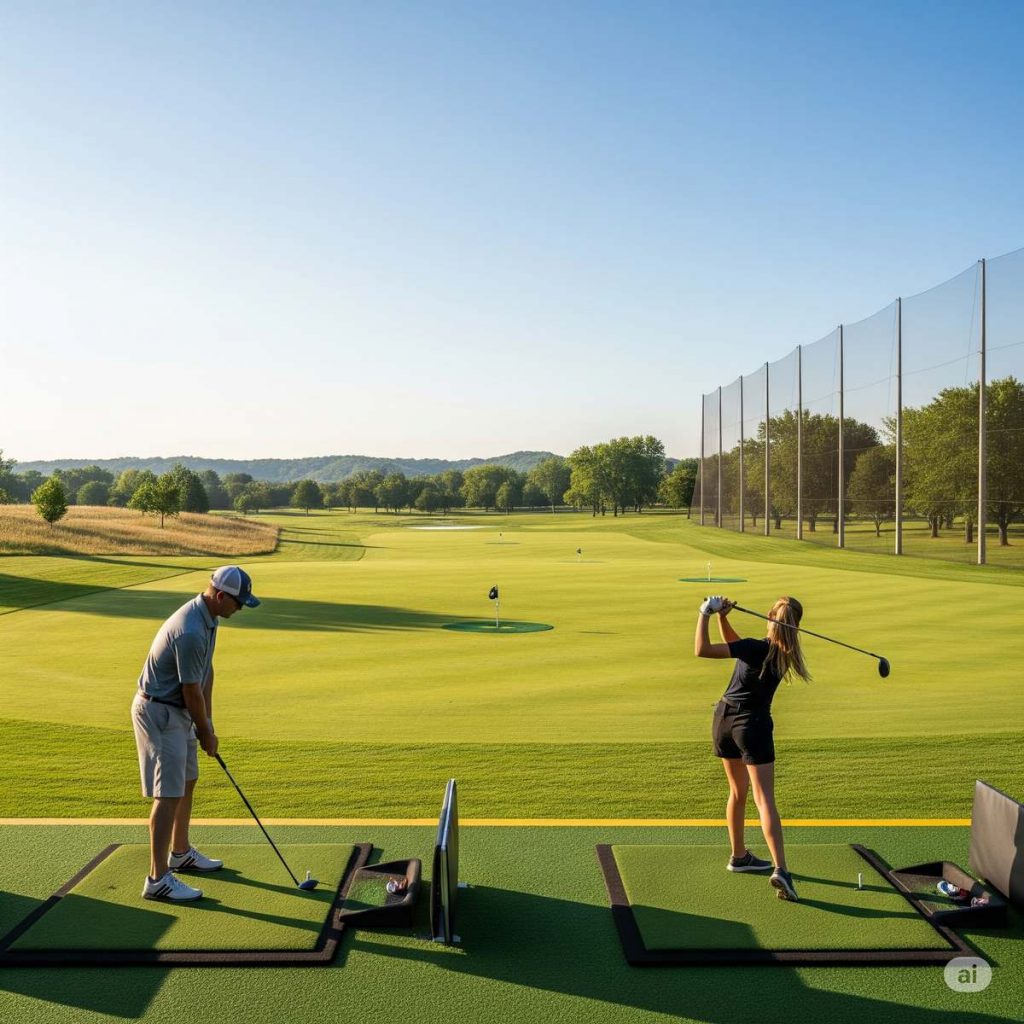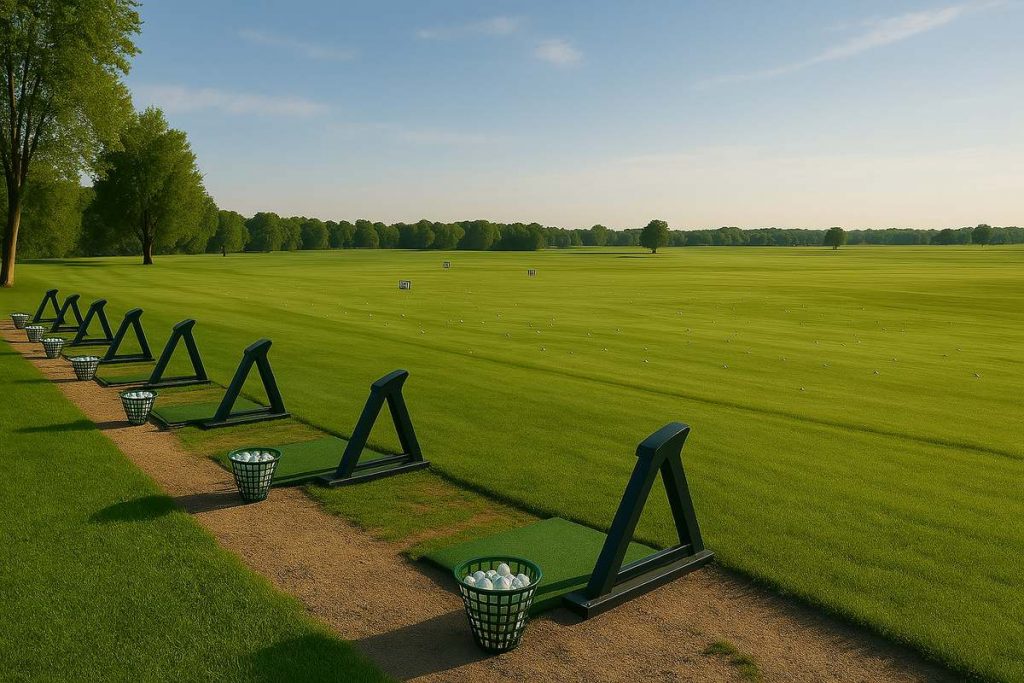(and How Golf Course Intel Can Help You Play Smarter)

Every golfer has experienced it: you’re absolutely striping your golf shots on the driving range, seeing those big numbers flash on the Trackman or golf simulator, feeling like a PGA Tour pro. Then you step onto the golf course, and suddenly, your perfectly struck 7-iron is landing 10-15 yards short of where you expected. What gives?
This isn’t just in your head – it’s a common phenomenon, and there are several compelling reasons why your real-world golf distances are generally shorter than those displayed in a controlled indoor environment. Understanding these factors is key to unlocking your true on-course potential and lowering your handicap.
The Great Outdoors vs. The Controlled Comfort of the Range/Simulator
Let’s dive into the aerodynamics, environmental factors, and even psychological aspects that contribute to this discrepancy:
1. Environmental Conditions: The Unseen Forces
- Wind: This is perhaps the most obvious and impactful factor for your golf shots. On a golf course, you’re constantly battling or benefiting from the wind. A slight headwind can easily shave off 5-15 yards from your carry distance, while a crosswind can significantly alter your ball flight and dispersion. Simulators, unless specifically programmed for wind, provide a perfectly still environment.
- Temperature and Humidity: Ever notice how the ball flies further on a hot, dry day? Warmer, less dense air offers less resistance, allowing the ball to travel further. Conversely, colder, humid conditions increase air density, reducing golf ball distance. Simulators often operate at a consistent, ideal temperature and humidity, negating these real-world effects.
- Elevation: Playing at a higher altitude means less dense air, which allows the ball to travel further. If your simulator is set to sea level conditions but you play golf in the mountains, you’ll naturally see shorter distances on the course.
- Turf Conditions: On the course, you’re dealing with varied turf conditions – plush fairways, thick rough, sandy bunkers, and firm greens. The amount of roll you get after ball landing is heavily dependent on these conditions. Simulators have pre-programmed roll calculations that might not accurately reflect the firmness or softness of a real golf course. A firm, dry fairway will provide significantly more roll than a soft, wet one, impacting your total distance.
2. Ball Type and Wear: The Hidden Culprit

- Range Balls vs. Premium Golf Balls: Most driving ranges use “range balls” which are typically designed for durability and cost-effectiveness, not maximum performance. These balls often have a lower compression and a deader core, resulting in significantly reduced spin rate and distance. They can play anywhere from 10-20% shorter than the premium golf balls you use on the course. Simulators, especially high-end ones, often use premium balls or special RCT (Radar Capture Technology) balls that are designed to provide accurate data.
- Ball Wear: Even your own golf balls on the course can accumulate nicks and scuffs over a round, impacting their aerodynamic efficiency and reducing golf shot distance. Simulator balls are typically pristine.
3. Mental and Physical Factors: The Human Element
- Adrenaline and Pressure: There’s no escaping the pressure of the golf course. The stakes are real, hazards are lurking, and your playing partners are watching. This can lead to tension in your swing, often resulting in a slightly slower clubhead speed or a less pure strike. On the range or simulator, the atmosphere is relaxed, allowing for a freer, more athletic swing.
- Multiple chances: On the range, you have multiple chances to stripe a golf shot. If the first doesn’t go well, you just grab another ball and hit away, maintaining your rhythm and cadence. On a golf course, you get one chance.
- Lie Conditions: On a simulator, every shot is from a perfect lie. On the course, you’ll encounter uphill lies, downhill lies, sidehill lies, and shots from the rough or sand. These varied lie conditions make it challenging to make consistent contact and fully compress the ball, leading to distance loss.
- Indoor Swing Syndrome: Some golfers unconsciously alter their swing indoors due to the confined space. This “indoor swing syndrome” can lead to a slight reduction in swing speed or a less aggressive follow-through, impacting ball speed and launch angle.
The Numbers Don’t Lie: Estimated Discrepancy
While it varies greatly depending on the individual, conditions, and simulator quality, a good estimate is that real-world golf shots on the course are generally 5-15% shorter than shots measured on a high-end simulator or range using premium balls. This percentage can increase further if you’re comparing against range balls or a less accurate simulator. For a typical mid-iron, this could easily translate to a difference of 10-20 yards.
Golf Course Intel: Your Real-World Advantage Powered by AI
This is where Golf Course Intel steps in. We understand that your simulator numbers, while valuable for swing mechanics and data analysis, don’t tell the full story of your on-course golf shot performance. We bridge this gap by taking your actual real-world golf data – provided by you, gathered from your rounds, shot by shot – and feeding it into our cutting-edge AI engines.

How to Get Your Golf Course Intel Strategy Guide
- Select the Tier of report from the three options below and click See All Options.
- View the Reports cover images and click the More Info button to see what’s included.
- While viewing a report description, click Request This Report in the upper right corner to make a “tee time” reservation.
- Choose your “tee time” by selecting the next available Date & Time on the calendar.
- Enter your contact & payment information, and submit.
- You’ll receive a confirmation email with the link to complete the Golf Stats Questionnaire.
- As soon as we receive your Golf Stats Questionnaire we will begin crunching your numbers!
What Can Golf Course Intel Do For Me?
Our sophisticated artificial intelligence goes beyond simple averages. It analyzes:
- Your unique player profile: We identify your personal swing tendencies, miss patterns, distances for various clubs, and even your fatigue impact as the round progresses.
- Course-specific variables: We factor in the actual hazards, layouts, distances, and elevation changes of the courses you play. Our geospatial data analysis provides unparalleled insights into every hole.
By combining your individual data with comprehensive course information, Golf Course Intel provides a truly real-world analysis of your game. Our AI-driven insights empower you to:
- Optimize Club Selection: No more guessing! Know precisely which club to hit for any given situation, accounting for environmental and terrain variables.
- Refine Course Strategy: Our AI helps you develop intelligent golf course management strategies for every hole. It suggests optimal tee shot placements, ideal approach angles, and smart layup targets to avoid hazards and maximize scoring opportunities.
- Improve Shot Selection: Learn when to attack pins and when to play safely. Our system quantifies the risk vs. reward of various shot choices.
- Personalized Practice Plans: Instead of generic drills, Golf Course Intel pinpoints the exact areas of your game that need improvement based on your real-world performance data. This means more efficient practice sessions and faster game improvement.
- Reduce Unforced Errors: By understanding your true distances and tendencies under various conditions, you’ll minimize those frustrating fat shots, thin shots, and shots that come up unexpectedly short.
Golf Course Intel is your ultimate digital caddy and performance coach, ensuring you make smarter decisions on the course, leading to better scores, more birdies, and a truly optimized golf experience. Stop leaving strokes out there – embrace the future of golf analytics and let our AI help you master the course, one perfectly played shot at a time!




0 Comments